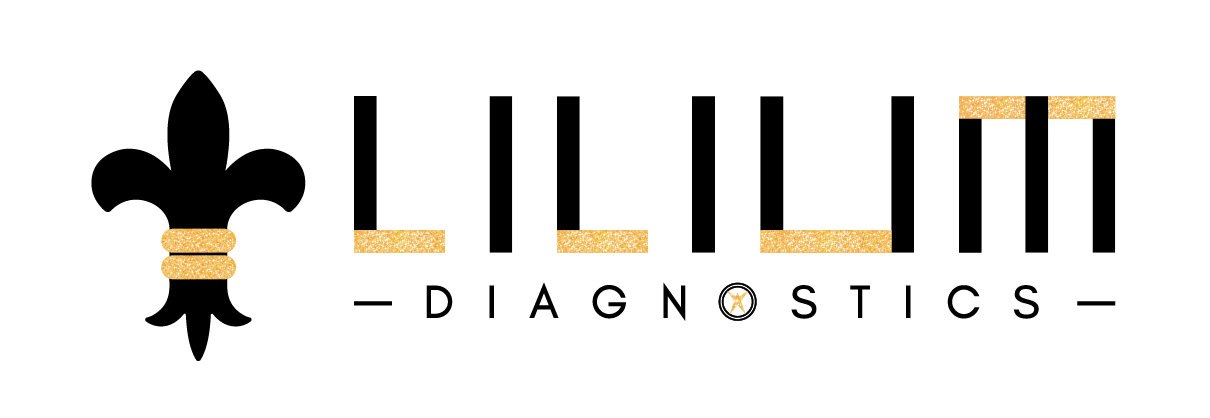


GOT QUESTIONS?
WE HAVE ANSWERS
If you have any questions, you can email us at info@liliumdiagnostics.com anytime or call us at (514) 341-8908 during our opening hours.






Nicotine and cotinine testing is typically conducted in a healthcare facility or clinical laboratory. These tests are typically requested by a physician or program administrator mandating nicotine or cotinine screening.





To continue booking, you need to select at least 1 test
* Results are available same day by 9 p.m. 99% of the time. On rare occasions, it may take up to 3 business days to receive results.
A nicotine test, also known as a cotinine test (cotinine being a nicotine metabolite), is employed to detect signs of nicotine usage and presumed tobacco consumption. These tests are conducted in various scenarios:
Smoking cessation programs: Nicotine and/or cotinine levels are often assessed to estimate the extent of nicotine intake before quitting, as well as to confirm successful tobacco and nicotine product cessation.
Insurance medical examinations: Although not all insurance providers mandate a medical examination or nicotine and cotinine testing, some may require applicants to undergo nicotine exposure testing as part of the pre-approval process for an insurance policy.
Employment assessments: Numerous employers enforce tobacco-free workplace policies, and nicotine or cotinine tests may be obligatory when applying for positions that prohibit smoking.
Medical assessments: Nicotine exposure might be evaluated as a prerequisite for surgical procedures or organ transplantation eligibility, as well as in cases of suspected nicotine poisoning. The use of tobacco increases the risk of impaired wound healing and can lead to adverse effects following organ transplantation. Nicotine poisoning, while rare, primarily affects children who accidentally ingest nicotine patches, gum, or e-cigarette liquid.
Nicotine or cotinine testing might be mandated as a component of smoking cessation programs, insurance medical examinations, employment-related screenings, or pre-surgical and organ transplant evaluations. When these tests are employed to assess potential nicotine poisoning, a physician may prescribe testing based on the presence of the following symptoms:
Prior to undergoing a nicotine or cotinine test administered by a healthcare provider, it is crucial to have a conversation with the doctor or the staff at the testing facility. Sample collection procedures can differ according to the purpose of the test and the specific requirements of the testing site.
As is the case with any other medical examination, be sure to inform your doctor about any prescription medications, over-the-counter drugs, or dietary supplements you may be using.
In the case of at-home cotinine testing, carefully read and follow the instructions provided in the test kit and ensure that you have all the necessary materials prepared before collecting a sample.
Nicotine is an addictive compound naturally present in tobacco leaves, which can be consumed by smoking, chewing, or sniffing tobacco. It is also produced synthetically and used in various products, including nicotine replacement therapy, e-cigarette liquids, and tobacco-free nicotine products. Testing for nicotine exposure involves detecting specific substances in urine, saliva, blood, or hair samples, including nicotine, cotinine, and other metabolites.
Nicotine testing, while it can measure nicotine levels in the body, is only reliable for a short time after exposure (a few hours). Cotinine testing, on the other hand, detects the presence of cotinine, a nicotine metabolite that remains in the body for several days (up to a few days) after nicotine exposure. This makes cotinine a more dependable indicator of nicotine exposure.
Additional tests may measure nicotine metabolites like trans-3'-hydroxy cotinine and nornicotine, although they are less commonly used. Some tests assess substances like anabasine to distinguish between tobacco use and nicotine replacement therapies.
Nicotine exposure can occur in various ways, including through:
The duration for which evidence of nicotine exposure can be detected is known as the detection window. This window varies based on multiple factors, including the type, amount, and frequency of nicotine exposure, as well as the sample used for testing and individual characteristics. In general, nicotine can be detected in the body for a short period, with half eliminated within approximately two hours after exposure. Cotinine levels, however, remain detectable in urine and blood samples for up to seven days. Persistent low levels of nicotine and cotinine in the body can result from ongoing exposure to secondhand smoke, thirdhand smoke, and environmental nicotine.
Nicotine and cotinine testing is typically conducted in a medical facility or laboratory, and these tests can be ordered by a healthcare provider or program administrator that necessitates such testing. Additionally, nicotine tests are available for purchase without a prescription and can be performed at home or self-administered at home and then sent to a testing facility for analysis.
For urine drug testing conducted in a laboratory, you will typically receive instructions to perform a clean catch urine sample to prevent contamination. Before the test, clean your hands and genital area with a provided wipe or cloth from the healthcare provider. Begin urinating into the toilet briefly, then position the collection container into the urine stream. Once the container reaches a pre-marked level, remove it from the urine stream and continue urinating in the toilet.
To collect a blood sample for a nicotine or cotinine test, a healthcare professional will draw blood from a vein in your arm.
Saliva samples for testing may require you to either spit into a collection device or place a pad in your mouth to collect saliva.
In hair follicle drug testing, samples are usually taken from the scalp, but if there isn't enough hair on the scalp, hair from another part of the body may be collected.
Nicotine and cotinine testing procedures are not typically painful, although some individuals may experience temporary discomfort during a blood draw. The process for collecting urine or saliva samples for at-home cotinine testing is similar to the methods used in laboratory-based tests. Following sample collection, at-home cotinine tests involve using a test strip or another device to analyze the sample for cotinine.
Since test devices can vary, it is essential to carefully review the instructions provided in the test kit before conducting the test on the collected sample.
Nicotine and cotinine test results provide information on the presence and potentially the quantity of nicotine or cotinine in your sample.
It's crucial to consider that nicotine and cotinine tests fall into two categories: qualitative and quantitative, and they are interpreted differently:
A positive test result indicates that a sufficient amount of nicotine or cotinine has been detected in the sample, meeting the test or laboratory's predefined cutoff value for a positive result.
Conversely, a negative test result suggests that an insufficient level of nicotine or cotinine was found in the sample, making it insufficient for a positive result. This outcome may occur because you have not used tobacco or been exposed to nicotine, the exposure was outside the detection window, or the detected nicotine level was too low to yield a positive result.
The cutoff values for positive test results, also known as the test's reference range, are not standardized and may vary between laboratories. These values are influenced by factors such as the test's intended purpose, the type of test sample, and the specific laboratory or at-home testing kit used.
Best Prices
Our fully automated private laboratory with cutting edge technology is able to reduce costs while increasing consistency and reproducibility of results.
Faster Service
We have designed our clinics and testing processes to be efficient, reducing wait times and time for results.
More Precise Information
Our test reports provide more precise information on test results, making it easier to monitor any changes in your health over time.
Free Parking
All our clinics provide free and available parking, helping you to save even more money and time.
Customer Support
Our online booking portal and helpful testing center staff help to make diagnostic testing more convenient and compassionate.

IMPLEMENT AFFORDABLE ACTION
Companies and institutions can deploy large-scale diagnostic testing at a fraction of the cost of testing centers with Lilium’s automated laboratory testing platforms and reporting.

STAY AHEAD OF OUTBREAKS
Lilium's pioneering testing system secures workplaces and communities against expensive shutdowns by keeping businesses and organizations ahead of outbreaks.

REDUCE RISKS
Robotic analysis improves accuracy of results by drastically reducing the risk of false negatives and positives.
To make an appointment, please choose from one of our clinics below:

Monday - Saturday
7:00 - 10:00
12:00 - 15:00

We provide FREE parking at our convenient locations


Our downtown Montreal location is located on the mezzanine level of the Alexis Nihon Center with 1 hour free indoor parking. Atwater metro station has a direct inside connection to Alexis Nihon.



If you’re driving to our Laval location, we are right off Autoroute 15 and have plenty of free parking.
If you arrive by public metro, there is a walkway to our lab from Metro Montmorency (a 20 minute walk).
What our customers say about us


ASK US ANYTHING
We're here to help make sense of it all.
Or send us an e-mail